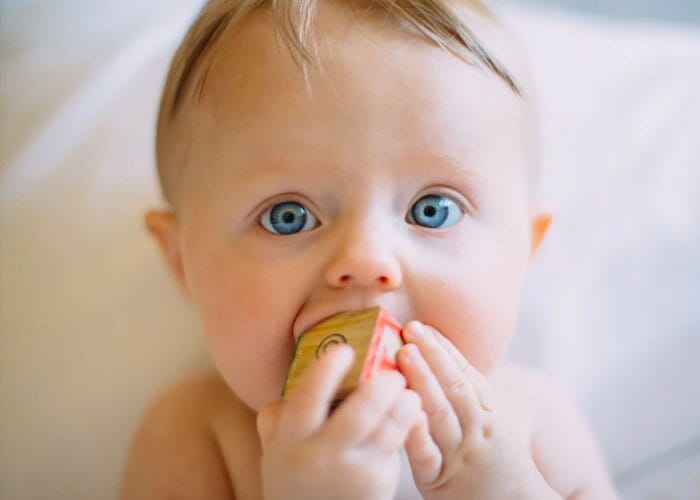How Does Your Child’s Vision Develop?

Just as babies aren’t born knowing how to walk and talk, they are not born with their visual sense fully developed, either. There are multiple steps when it comes to vision development in infants, starting from the point where your child sees mostly fuzzy, black and white images to him or her being able to focus both eyes, see in full color, track and switch between multiple targets and accurately judge distance.
If you have a newborn and are curious about how their vision should develop, read on for details.
Vision Development During the First Year
For the first two months, a baby’s eyes are not yet coordinated and may go off in different directions; they are still learning to focus on individual objects. By the third month, they should be able to follow a moving object and even reach out for it.
For the first four months, a child has difficulty switching back and forth from different objects when focusing their eyesight. They will typically focus on something about 8 to 10 inches from the face. Depth perception should finally start to develop around the fifth month, as should more clearly defined color vision.
From eight to 12 months, babies are starting to crawl, sit up and walk. All of these activities help to improve hand-eye coordination.
Vision Development Between One and Two Years of Age
Between one and two years, the child should have well developed hand-eye coordination and depth perception, so they can reach for things and throw things accurately. They should also be able to recognize familiar objects or pictures by age two.
Depth perception, focusing, and tracking should continue to develop through early and into middle childhood, and convergence, where both eyes are focused on the same object at the same time, should be mostly developed by the age of seven.
Children naturally tend towards farsightedness, but some inherit myopia or astigmatism instead.
Vision Examinations for Children
It’s very important that your child receive a comprehensive eye examination in the first twelve months. According to an American Optometric Association (AOA) survey, only 18% of parents had their pre-one year old get an eye exam in 2011. The AOA recommends you get your child a comprehensive eye exam at 6 months.
5 to 10% of preschool-age children and 25% of school-age children have some kind of vision problem, and in many cases, early diagnosis can be key to how responsive your child is to treatment for their vision problems. In addition, vision problems can mimic learning disabilities, so the sooner you have your child’s vision corrected, the more likely they are to have fewer struggles with their lessons in school.
After the 6-month exam, unless the doctor recommends otherwise, you should plan to have your child’s eyes examined at age 3 and right before entering the first grade. Once your child enters school, if they need corrective lenses they should be examined every year, if not, every two years.
Scheduling Your Child’s Eye Exam
Scheduling eye exams for your child is easy, and an eye examination tends to be much less invasive than other physical medical examinations, so your child should experience little anxiety or discomfort when receiving their eye exam.
If you are in the Portland area and which to schedule an eye exam for your child with highly professional optometrists in a comfortable environment, please do not hesitate to contact Beaumont Vision today.

